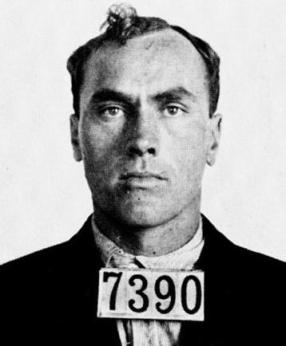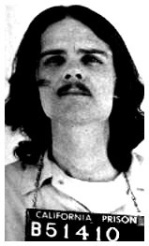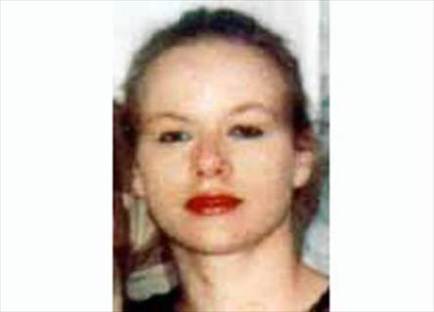
Full Article
New tools for solving the ultimate crime mystery
By Katherine Ramsland in Shadow Boxing
Edward Rulloff believed that one day his brain would be valuable for science, but not for the reasons he anticipated. He was a self-proclaimed genius, but also a serial killer and it was the latter that attracted scientific attention. After Rulloff was executed in 1871, Dr. George Burr took possession of his skull and brain, believing that these items would yield important information about criminal dispositions. They didn’t.
More than a century later, cognitive neuroscience appears to be on the brink of confirming what Burr and other past researchers suspected, that certain forms of violent criminality have a neurological substrate. During the late nineteenth century, prominent anthropologists and anatomists examined scores of criminal skulls and brains for signs of criminal insanity.
Among the most infamous subjects was Joseph Vacher, who had brutally slaughtered many young men and women in France.

After his conviction and execution in 1898, his brain was divided and distributed to learned men from diverse disciplines. Each studied his piece, but they reached no consensus. Although one expert spotted signs of syphilis, another compared Vacher’s highly developed speech center to that of a prominent French statesman.
Twentieth-century psychiatrists acquired the postmortem brains of the likes of serial killers John Wayne Gacy and Fred West, as well as mass murderers Michael Ryan and Richard Speck.
(Dahmer‘s brain was fought over but ultimately denied to science.)
Charles Whitman, who shot at numerous people from a tower in Texas in 1966, believed his brain was disturbed. In a suicide note, he requested an autopsy. It turned out that a tumor the size of a walnut impacted the hypothalamus and amygdala. Thirty years later, the brain of Thomas Hamilton, who slaughtered 16 children in Scotland in 1996, showed evidence of a thyroid disorder associated with mental confusion and impulsive violence.
Dr. Adriane Raine was the first to focus certain types of brain scans exclusively on murderers. He got his start in neuro-developmental criminology by attaching sensors to inmates’ skin to measure their agitation when he made a loud sound.
In another study, he discovered that children from a small island who had slower heart rates and reduced skin responses when exposed to challenges or loud noise got into more trouble than other children. However, nutrition and improved education helped to reduce their criminality later in life. It was thought that because they did not experience normal fear or distress, they did not learn from risky behavior. They also did not learn empathy.
I am not so sure how much this proves. Hungry uneducated kids are usually going to behave worse than kids that are fed well and given an education. If nothing else kids that are not going to school have more time to get into trouble. This is common sense, not really science.
This will need much more study to make any impact on the criminal justice system.
In a review of literature in 2008, Raine and his colleagues surveyed the results of different types of brain imaging on inmates diagnosed with antisocial personality disorder. They described fMRI, PET, SPECT, and aMRI as the most widely used approaches. They examined blood flow patterns and the anatomical structure of gray matter, concluding that there are visible structural and functional impairments in antisocial, psychopathic and repeatedly violent individuals.
They narrowed down the affected areas of the prefrontal cortex to the orbitofrontal and dorsolateral prefrontal cortex, and also looked at the superior temporal gyrus, amygdala-hippocampal complex, and the anterior cingulate cortex. The researchers predicted that people with these disorders would not respond normally to the threat of punishment, would be impaired in their moral judgments, and would poorly grasp the emotional implications of their behaviors.
Neuroscience today appears to be on track to demonstrate that psychopaths, the most persistently dangerous and criminally diverse of all offenders, fail at remorse because their brains are just different. They might be unable to fully appreciate their behavior and would have reduced incentive to guide it in prosocial ways.
Neuroscience is still young, and the images on a brain scan are not yet definitive, but as the data mount and the instruments become more precise, we’ll have to come to terms with the possibility of changes in how we deal with the most dangerous people in our midst. As yet, biology is not destiny, but those nineteenth-century scientists who made a grab for criminal brains (with the exception of Dr. Frankenstein) had the right idea.

He just realized that he has no clue either!
My main problem with these studies is that they can never say that All serial killers have a -insert ‘condition here’. Some, not all, serial killers have had head injuries. A few, not all, serial killers have had tumors in their brains. No, it does not even follow that the ones with tumors are the ones that did not have head injuries.
There is also the troubling fact that many who do not kill have had the same defect, condition or problem as serial killers. I know many people who had concussions that did not go on to slaughter people in the future. I am sure that you do as well.
It is kind of the same thing with social contributors. Child abuse, over bearing mother, absent father, teasing, neglect, on and on have all been given as reasons for someone becoming a serial killer. I know many people that were abused, neglected, had a bad mom or dad or no mother or father and so on and again, they did not go on to slaughter people as adults.
Even the doctors and scientists cannot agree and come to a conclusion. Nature, nurture, brain defect, DNA, none of the experts can say what is or is not to blame, if it is a combination of these things and what is the magic ‘make your own serial killer’ recipe.
Here are a few articles dealing with some of the different theories.
The Psychology of a Serial Killer
The human brain is the most complex organ in the human body and yet it is extremely sensitive and delicate requiring maximum protection. The human brain is so fragile that any type of brain trauma can cause serious psychological complications. According to one research study the brains of 70 serial killers were examined and of those 70, all of them showed some type of trauma or damage done to the frontal lobe. The frontal lobes are located behind the forehead and are responsible for our speech, our thoughts, the way we learn, how we react to emotions, and control our movement. According to Pennie Packard, the frontal lobe “is responsible for much of the behavior that allows humans to live together in stable social relationships. It is what stops most human beings from acting on their inherent violent tendencies.” (Packard, 2011)

'Normal' brain vs 'Serial Killer' brain
The psychology of serial killers continues to be an ongoing mystery. Even though there have been many studies to determine that serial killers could have suffered some type of brain trauma there are other studies reviling that what makes one become a serial killer is inherited DNA. The “warrior gene” or its scientific name MAO-A gene (monoamine oxidase A) has been found in many serial killer’s DNA. Dr. James Fallon, a neuroscientist at the University of California-Irvine has studied the brains of psychopaths for the last 20 years. According to Fallon there are 12 genes related to aggression and violence. MAO-A-gene was the most common one found in many of the brains Dr. Fallon has studied. (Hagerty, 2010) Dr. Fallon and others have concluded that those who have a certain version of the warrior gene suffer from irregularities of serotonin in the brain. Serotonin is what affects our mood (like Prozac) and carriers of this gene have shown that their brains cannot respond to the calming effects of serotonin. (Hagerty, 2010) In the picture above the brain on the left is that of a normal human being whereas the brain on the right is that of a serial killer. Can you see any differences?
http://criminalprofilingworks.blogspot.com/2011/04/psychology-of-serial-killer.html
Again, it is ‘many’ of them, ‘some’ of them not ‘all’ of them. In the brain scans they only did 70 and obviously did not include Bundy’s in the study since his brain showed no damage or differences.
What Makes Serial Killers Tick?
By Shirley Lynn Scott
Brain Defects
“After I’m dead, they’re going to open up my head and find that just like we’ve been saying a part of my brain is black and dry and dead,” said Bobby Joe Long, who suffered a severe head injury after a motorcycle accident. According to many researchers, brain defects and injuries have been an important link to violent behavior. When the hypothalamus, the temporal lobe, and/or the limbic brain show damage, it may account for uncontrollable aggression.
It can cause, not that it does cause. There are many people who have had injuries to the head, even severe, that do not have long term reactions.
The hypothalamus regulates the hormonal system and emotions. The “higher” brain has limited control over the hypothalamus. Because of the physical closeness of sexual and aggressive centers within the hypothalamus, sexual instinct and violence become connected for lust murderers. The hypothalamus may be damaged through malnutrition or injury.
The temporal lobe is highly susceptible to injury, located where the skull bone is thinnest. Blunt injuries, including falling on a hard surface, can easily damage this section of the brain, creating lesions, which cause forms of amnesia and epileptic seizures. Damage to the temporal lobe can result in hair-trigger violent reactions and increased aggressive responses. As a child, Ken Bianchi fell off of a jungle gym, and landed on the back of his head. He soon began to have epileptic seizures.
Researcher Dominique LaPierre believes that the “prefrontal cortex, an area of the brain involved in long-term planning and judgment, does not function properly in psychopathic subjects.” Paleopsychologists also believe that there is some sort of malfunction in the brain of serial killers, that somehow their primitive brain overrides the “higher” brain: reason and compassion take a backseat to lust, aggression, and appetite. A study by Pavlos Hatzitaskos and colleagues reports that a large portion of death-row inmates have had severe head injuries, and that approximately 70% of brain-injured patients develop aggressive tendencies.
Some of these brain injuries are accidental, but many of them were inflicted during childhood beatings. Among the many serial killers who had suffered head injuries are Leonard Lake, David Berkowitz, Kenneth Bianchi, John Gacy, and Carl Panzram, who, as a child, had some sort of head infection. “Finally my head swelled up as big as a balloon. … I was operated on in our own home. On the kitchen table,” he wrote. “I would sure like to know if this is the cause of my queer actions.”

Carl Panzram
Ted Bundy, however, had extensive X-rays and brain scans, which revealed no evidence of brain disease or trauma.

Ted Bundy
Ted Bundy was as cruel and vicious as they come and there was no sign of damage or disease in his brain. So how can damage be considered an ingredient in making a serial killer if only some have it?
Studies show that the lack of physical touch can be harmful to the child’s development. In a study of chimpanzees, the babies who were not handled became withdrawn, and later began to attack others. Some serial killers had been separated from parents at early age, or were denied their mother’s love and physical touch.
Many, who are not violent, have brain injuries and biological abnormalities. A lump on the head is no singular forecast for a serial killer. Can evil be reduced to a chemical equation? Perhaps it is a combination of environment and chemical predispositions. What we do know is that no singular pattern emerges for serial killers. Many of these biological studies are new, so perhaps in the future the chemical profile of serial killers will be revealed.
http://www.trutv.com/library/crime/serial_killers/notorious/tick/9b.html
What about nonviolent people who have the same brain scans and DNA of serial killers but, well, aren’t? Wouldn’t it be even more interesting if the nonviolent person with the brain and DNA of a serial killer was one who studies serial killers? How do we explain this? How much credit can we give to the scans when they do not occur only in violent offenders?
A Neuroscientist Uncovers a Dark Secret
by BARBARA BRADLEY HAGERTY
The criminal brain has always held a fascination for James Fallon
(Yes, the same one as in the article above!). For nearly 20 years, the neuroscientist at the University of California-Irvine has studied the brains of psychopaths. He studies the biological basis for behavior, and one of his specialties is to try to figure out how a killer’s brain differs from yours and mine.
About four years ago, Fallon made a startling discovery. It happened during a conversation with his then 88-year-old mother, Jenny, at a family barbecue.
“I said, ‘Jim, why don’t you find out about your father’s relatives?’ ” Jenny Fallon recalls. “I think there were some cuckoos back there.”
Fallon investigated.
“There’s a whole lineage of very violent people — killers,” he says.
One of his direct great-grandfathers, Thomas Cornell, was hanged in 1667 for murdering his mother. That line of Cornells produced seven other alleged murderers, including Lizzy Borden. “Cousin Lizzy,” as Fallon wryly calls her, was accused (and controversially acquitted) of killing her father and stepmother with an ax in Fall River, Mass., in 1882.
A little spooked by his ancestry, Fallon set out to see whether anyone in his family possesses the brain of a serial killer. Because he has studied the brains of dozens of psychopaths, he knew precisely what to look for.
“People with low activity [in the orbital cortex] are either free-wheeling types or sociopaths,” he says.
Fallon says nobody in his family has real problems with those behaviors (with ethical behavior, moral decision-making and impulse control). But he wanted to be sure. Conveniently, he had everything he needed: Previously, he had persuaded 10 of his close relatives to submit to a PET brain scan and give a blood sample as part of a project to see whether his family had a risk for developing Alzheimer’s disease.
After learning his violent family history, he examined the images and compared them with the brains of psychopaths. His wife’s scan was normal. His mother: normal. His siblings: normal. His children: normal.
“And I took a look at my own PET scan and saw something disturbing that I did not talk about,” he says.
What he didn’t want to reveal was that his orbital cortex looks inactive.
“If you look at the PET scan, I look just like one of those killers.”
Fallon cautions that this is a young field. Scientists are just beginning to study this area of the brain — much less the brains of criminals. Still, he says the evidence is accumulating that some people’s brains predispose them toward violence and that psychopathic tendencies may be passed down from one generation to another.
And that brings us to the next part of Jim Fallon’s family experiment. Along with brain scans, Fallon also tested each family member’s DNA for genes that are associated with violence. He looked at 12 genes related to aggression and violence and zeroed in on the MAO-A gene (monoamine oxidase A). This gene, which has been the target of considerable research, is also known as the “warrior gene” because it regulates serotonin in the brain. Serotonin affects your mood — think Prozac — and many scientists believe that if you have a certain version of the warrior gene, your brain won’t respond to the calming effects of serotonin.
Fallon calls up another slide on his computer. It has a list of family members’ names, and next to them, the results of the genotyping. Everyone in his family has the low-aggression variant of the MAO-A gene, except for one person.
“You see that? I’m 100 percent. I have the pattern, the risky pattern,” he says, then pauses. “In a sense, I’m a born killer.”
Fallon’s being tongue-in-cheek — sort of. He doesn’t believe his fate or anyone else’s is entirely determined by genes. They merely tip you in one direction or another.
And yet: “When I put the two together, it was frankly a little disturbing,” Fallon says with a laugh. “You start to look at yourself and you say, ‘I may be a sociopath.’ I don’t think I am, but this looks exactly like [the brains of] the psychopaths, the sociopaths, that I’ve seen before.”
http://www.npr.org/templates/story/story.php?storyId=127888976
PART 2: Inside A Psychopath’s Brain:The Sentencing DebateJune 30, 2010
PART 3: Can Your Genes Make You Murder?July 1, 2010
I also fear that by trying to blame brain damage / dysfunction the general public might start to (again?) see Serial Killers as ‘crazy’. That is worrisome on a few fronts; it allows the serial killer to hide easier. The general public will be looking for ‘crazy looking people’ (whatever that means) and not aware that monsters look just like the rest of us.
The ‘crazy’ idea also makes court proceedings dangerous. Since juries are formed from the general public if the majority of the public thinks of serial killers as ‘crazy’ insanity defenses and ‘cured’ parolees become a risk.
Psychopaths and serial killers are subject to constant research. Not only are people fascinated by their callousness, but people also want to learn what makes them what they are. It is always said that knowledge is power. If we could gain enough knowledge through research, then it may be possible to reprogram these violent people.
John Douglas explained in his book, The Mindhunter, that most serial killers are not psychotic. “Psychotic” implies that a person has a psychosis that has caused him to lose touch with reality, and have episodes like hearing voices or delusional behavior, and serial killers do not have this condition. He says that serial killers are psychopaths who suffer from chronic mental disorders coupled with violent and aggressive social behavior (Douglas, 1996). Does this mean that serial killers are crazy or insane? The answer is no. Serial killers are the most extreme form of psychopaths, but are not crazy or insane in any sense of those words.
http://livingamongpredators.over-blog.com/article-35527842.html
So we are right back to where we were we do not know what causes a person to become a serial killer. Nature, nurture, brain damage, DNA, abuse, neglect, divorce, maybe diet?















